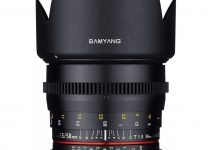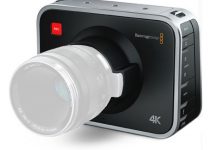Both lavalier and shotgun mics have their strengths and weaknesses when it comes to capturing high-quality sound on set, whether you need to conduct an interview for a documentary or commercial project or just want to shoot another dialogue scene for your short or full-length feature film.
Many times, opting for the right setup could be a challenging and overwhelming task even for the most experienced sound guys mainly due to the numerous obstacles on location that should be taken into consideration long before the camera starts rolling.
So, if you’re not a professional sound guy or this mic conundrum is just making your head hurt too much, Greg of LensProToGo will help you to sort things out by exploring the main pros and cons of wireless lavaliers and boom shotgun mics, thus making the mic setup choice and placement much easier and straightforward process.
First and foremost, the biggest advantage of using a lavalier mic is that you can place it much closer to the person that you’re recording which in most cases is an essential prerequisite for capturing clear and quality sound. Plus, your talent could be moving around freely with a wireless mic attached to his/her clothing while filming without compromising on the captured sound quality. This setup is ideal for shooting walk-and-talk scenes or instructional videos with a small and compact crew when working under tight deadlines.
The main shortcoming of using a wireless lavalier mic, though, is the possibility of wireless interferences that might interrupt your recording, most likely when you’re shooting in a dense city environment. Some wireless audio systems employ automatic frequency control to counteract this issue, but it’s still a good idea to do a quick sound check before start shooting. Also, bear in mind that most lavalier mics are omnidirectional, which means that even if you mount a lav mic as close as possible to your subject, you could still be picking up distracting and unwanted background or clothes rustling sounds.
The shotgun mics, on the other hand, excel for sound recording due to their more precise pick-up pattern. These are a fantastic option when your talents aren’t moving around too much, or you have a dedicated boom mic operator who’s able to take care of the sound recording along the way. Even though these microphones have a super-cardioid or hyper-cardioid pattern and provide better quality, you still need to place them as close as possible to your sound source, while trying to keep the shtgun mic out of your frame at the same time.
Another advantage of using a shotgun mic is that you don’t have to wire up everyone like you should typically do with a lavalier mic. That’s why this type of microphone is the perfect choice fo an interview setup with many participants. Plus, with boom shotgun mics you have countless options when it comes to wind control when shooting outdoors. Keep in mind, though that these devices are more expensive and less forgiving than lavalier mics when it comes to improper mic placement.
Ultimately, whether you choose a lavalier mic or a shotgun boom mic for your next production, make sure that you’ve eliminated as many distracting sounds as possible before you start recording and always monitor your sound with a decent pair of headphones. You can even use both of these tools simultaneously as it’s always recommended to have a backup sound source, especially when working on a commercial project where having the best quality sound should be one of your primary considerations.
Disclaimer: As an Amazon Associate partner and participant in B&H and Adorama Affiliate programmes, we earn a small comission from each purchase made through the affiliate links listed above at no additional cost to you.




When using a lavalier mic, a solution to avoid wireless interference is to use a field recorder like a Zoom H1 or a Tascam DR-05, plug the lav mic in it, and put the recorder in the talent’s pocket or fix it to his belt.
Disclaimer: I’m not a professional 😉